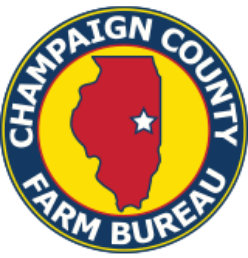by Joanie Stiers
Drones Take Off in Agriculture
Most have seen those cool, little drones that hover like hummingbirds to capture bird’s-eye images at festivals, weddings and sporting events. In agriculture, these unmanned aerial vehicles survey cattle, monitor plant health, locate wind-damaged crops and define field boundaries.
But check out the big brother: A drone with a footprint the size of a small SUV and the weight-holding capacity that could (but shouldn’t) carry a small adult. These high-tech, spider-like pieces of technology rank among the must-see items at farm shows, where companies like my husband’s deliver first-hand accounts of the drone’s ability to use next-level technology to apply liquid products of herbicides, fungicides and biologicals and dry products of cover crop seeds and granular fertilizers.
As drones start to grow in the agricultural space, they are gleaning second glances from a generation with thumbs skilled enough to message on phones without auto-correction and power game controllers with precision. Their minds carry a keen desire to use technology to make jobs better, easier and more accurate while bringing excitement and new-age thinking to age-old farm tasks.
Drones are attracting young people who love technology to an industry that they misinterpreted as just for farmers. Meanwhile, these large-capacity drones are giving next-generation farm kids a way to generate income to support the family farm’s growth with a sideline gig as a licensed, for-hire drone application business. It’s another exciting example of innovation in agriculture.
The capacity currently does not match that of its rubber-tired counterpart but drones can still operate when field conditions are muddy. It needs more fill-ups, requires frequent battery swaps and licensing may overwhelm newbies, though it’s attainable. The future holds promise for larger storage capacity, longer battery life and swarm technology that allows multiple drones to work in concert to complete a task. The devices seem a prime candidate to deliver see-and-spray technology for weed control, and the potential is untapped in field boundary generation, crop indexing and thermal imaging.
In our farm’s wheat fields this spring, a drone corrected a ground rig’s mis-applied batch of dry fertilizer. Using a satellite-guided prescription written to deliver fertilizer only on the field’s under-nourished areas, the drone’s fully autonomous application noticeably improved the plant health within the week. So, we hired the drone to spray fungicide. It applied the product without leaving a track in the wheat as our own sprayer would have. The result: a fantastic grain yield and a barn full of bright yellow straw bales.
About the author: Joanie Stiers farms with her family in west-central Illinois, where they grow corn, soybeans, wheat, hay and cover crops and raise beef cattle, backyard chickens and farm kids.

